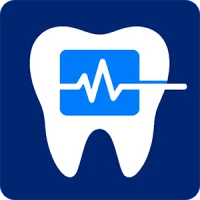
Dental Blog
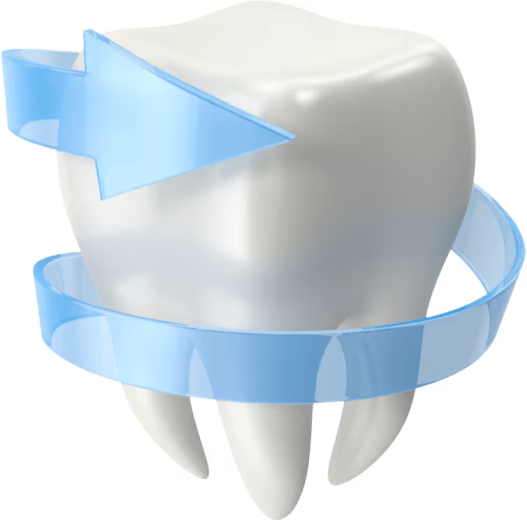

Resources for Dentists
Dive deep into helpful guides and in-depth information about:

Your Resource for Dentistry Insights
Sedation dentistry is evolving. Regulations change, compliance requirements grow, and practices need tools to stay ahead. The Sedate Dentistry Blog is here to help you learn, adapt, and succeed with resources built for dentists, oral surgeons, and office managers.

Explore Topics That Matter

Sedation Dentistry
Learn about sedation dentistry's best practices, compliance tips, and case studies.
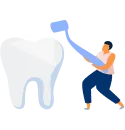
Patient Vitals Monitoring
Device integrations, patient monitoring, and technology insights.

Patient Forms & Experience
Intake forms, digital consent, and patient-focused workflows and user experience.

Dental Practice Growth
Grow your dental practice with in depth guides, tutorials, and software reviews.
Recent Guides for Dentists

From Paper Chaos to Digital Compliance: A Solo Dentist’s Story
A solo dentist running nitrous, oral, and occasional IV sedation went from loose paper charts and late entries to clean, audit-ready digital records in four weeks. This story details the exact template changes, role tweaks, and device choices that made documentation faster and safer—without adding clicks.
Table of Contents
From Paper Chaos to Digital Compliance: A Solo Dentist’s Story
The starting point: solid care, scattered records
The goal: one time-stamped story that defends itself
The first decision: move standards into the live chart
The template they built (and why it worked)
Integrations that actually mattered for one-op sedation
Before vs after: numbers a solo practice can feel
The dose-entry script that ended ambiguity
The nitrous pattern that passed audits in seconds
Discharge by criteria—not by schedule pressure
A real flow note before and after the switch
Objections (and how this solo doc answered them)
Week-by-week plan for a one-op sedation clinic
Solo practices don’t have spare people or spare minutes. This case study shows how one dentist and a two-assistant team replaced paper sedation logs with a single digital record, timer-driven intervals, and a compact nitrous block. You’ll see the week-by-week rollout, before/after metrics, and the scripts and checklists they used so notes tell the clinical story clearly the first time.
The starting point: solid care, scattered records
The practice delivered safe sedation but couldn’t prove it at a glance. Paper charts mixed checkboxes and free-text; dose entries sometimes skipped concentration or route; nitrous was marked “used” without details; interval vitals slipped during local infiltration or stimulation; discharge notes were paraphrased. Audits and payer questions meant late nights reconstructing events from memory.
The goal: one time-stamped story that defends itself
The dentist defined three outcomes. Documentation had to read like a timeline from baseline to discharge. Every medication entry needed name, concentration (mg/mL), route, exact dose, time, indication, response, and running total. Discharge had to be objective and enforced, not “looks fine.” They also wanted interval vitals to be on time without anyone watching a phone timer.
The first decision: move standards into the live chart
Standards stick when they live where people click. Intake, vitals, meds, nitrous, events, and discharge were centralized in Sedation visit record software so the whole story sits in one place. For longer cases, a timeline with interval prompts runs in IV sedation charting software. Policy language, consent templates, and enforced discharge criteria are versioned in Dental sedation compliance.
The template they built (and why it worked)
Templates removed ambiguity without slowing care.
● Medication block with required concentration (mg/mL) and route fields forces complete entries on the first pass.
● “Eight-field” dose script matches the fields on screen to speed read-backs and prevent unit mix-ups.
● Compact nitrous block captures start time, titration range, peak percentage, duration at peak, and O₂ flush in one place.
● Objective discharge checklist requires final vitals, orientation, ambulation with minimal assistance, nausea/pain control, oral fluids tolerated, and escort confirmation (for oral/IV).
Roles adapted for a lean team
Solo doesn’t mean solo in the room. The dentist kept four functions, sometimes with one person doubling up between phases.
● Sedation Lead (dentist) decides the plan and titrates.
● Monitor Tech sets alarms and calls vitals on the timer.
● Recorder types in real time and reads back each dose.
● Room Support stages suction/oxygen and checks reversal expirations.
Even with two assistants, assigning ownership kept intervals on time and eliminated “who’s logging this?” moments.
Integrations that actually mattered for one-op sedation
Automation reduced lag and double-entry. The practice began by streaming SpO₂ and HR to the chart; NIBP and ETCO₂ were added as budget allowed. Device setup used Patient Vitals Monitor Integrations so vitals appeared in the record without transcription. The Monitor Tech verified pleth quality and cuff fit before induction so artifacts didn’t pollute the timeline.
What changed on day one
The room got calmer. The Monitor Tech owned the timer; the Recorder used the eight-field dose script and never left the chart for a calculator. Nitrous took one compact entry instead of fragments. Discharge couldn’t be signed until criteria were checked, which stopped “vibe-based” decisions late in the day.
Before vs after: numbers a solo practice can feel
Small, reliable gains compounded fast. Paste this table into your playbook.
The dose-entry script that ended ambiguity
Clarity came from one repeatable sentence spoken and typed for every med entry. “Medication name and concentration (mg/mL), route, exact dose, time, indication, response, running total.” Example: “Midazolam 1 mg/mL, IV push, 1.0 mg at 09:42 for anxiolysis. Calmer; RR 14; SpO₂ 98%. Running total 1.0 mg.” The fields match the script, so charting takes seconds and nobody backfills later.
The nitrous pattern that passed audits in seconds
Gas is dose over time, not a checkbox. The Recorder logs: start time, titration range (e.g., 20–35% N₂O), peak percentage and duration at peak, and O₂ flush at the end. Keeping this in one “nitrous” block inside digital sedation visit records replaces vague notes with a complete, scannable line.
Discharge by criteria—not by schedule pressure
Objective discharge stops subtle drift at the end of the day. The team recorded recovery vitals, orientation, ambulation with minimal assistance, nausea/pain control, oral fluids tolerated, and escort briefed (for oral/IV). The chart enforced completion before sign-off with compliance checklists for sedation.
A real flow note before and after the switch
Narrative clarity turned end-of-day paperwork into two minutes of tidy work.
● Before: “Vitals good. A little anxious. Nitrous helped. Went well. Discharged OK.”
● After:
○ 09:37 Baseline vitals ×2 recorded.
○ 09:42 Midazolam 1 mg IV for anxiolysis; calmer; RR 14; SpO₂ 98%. Running total 1 mg.
○ 10:12 N₂O 20–35%; peak 35% 10:18–10:34; O₂ 100% ×5 min at end.
○ 10:38 Recovery vitals stable; oriented ×3; ambulates with minimal assistance; nausea/pain controlled; discharge per clinician.
Objections (and how this solo doc answered them)
“Digital will slow me down.” It removed rework—timers prompted intervals, and required fields prevented chase-downs. “My cases are simple.” Simple cases still need defensible nitrous detail and objective discharge. “I can’t afford it.” One documentation error or payer appeal costs more than a year of software; the solo doc priced it out with Sedate Dentistry vs. paper records and finalized with Plans & Pricing.
Week-by-week plan for a one-op sedation clinic
Short sprints made change stick without hurting production.
Where this story fits in your case-study library
If you want to see the same playbook in a multi-op setting, compare Audit-Ready in Seconds: A Compliance Success Story. If automated vitals interest you, read Case Study: Improving Sedation Patient Safety With Automated Monitoring. If you’re evaluating a platform switch from a legacy system, study Case Study: Transitioning a Mid-Sized Practice From Xchart to Sedate Dentistry.
Bottom line
A solo practice can make sedation documentation safer and faster in a month. Put standards inside the software you already use, let timers drive behavior, chart nitrous like a medication, and require objective discharge. The payoff is quieter rooms, cleaner charts, and an audit trail that speaks for itself.
Next Steps
Book a Free Demo to see how Sedate Dentistry’s Digital Sedation Visit Records Software can streamline and replace paper sedation visit records—saving time, money, and increasing compliance while reducing liability and improving the quality of patient records.
Ready to modernize your sedation documentation? Book a Free Demo

Stay Ahead of the Curve
Benefits of Following Our Blog
Learn compliance best practices.
Discover new sedation software features.
Get expert tips for improving patient care.
See how practices are switching from paper or competitors like Xchart.

Learn More About Sedate Dentistry?
Request a software demo today. See how we can digitalize your sedation visit records.
Simple Pricing, No Hidden Fees
No limits on Procedures or Patients (additional fees for additional offices and dentists)
Testimonials
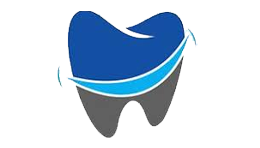
SmileRight Dentistry
Here's Sedate Dentistry Software in a nutshell. Time Saver. Money Saver. Easy to use. Amazing support. End of story.
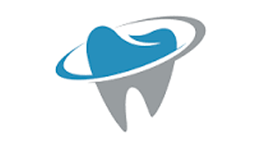
DentalClean
We learned about Sedate Dentistry from one of their other sister companies Edental. We switched from Xchart and this app works great.
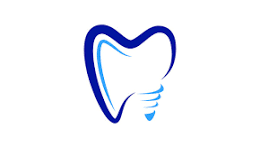
Metro Dentistry
The team at Sedate Dentistry has been amazing, especially Josh who helped integrate into our Edan X10. Much better than Xchart and a fraction of the price.
Contact Us
Contact Us
3165 West 4700 South, Suite A, Taylorsville Utah 84129



















